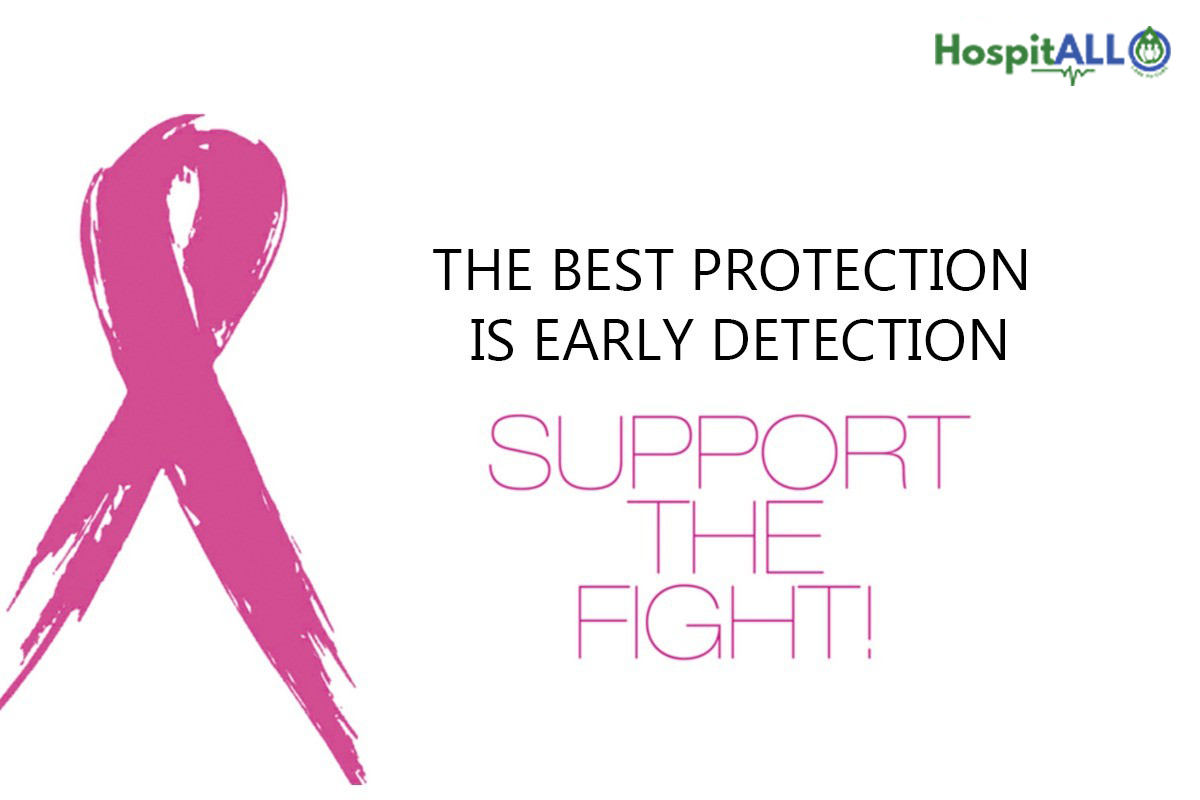
October is celebrated as Breast Cancer Awareness month. This month focuses on increasing attention towards public awareness, early detection and treatment of Breast Cancer. Globally there are about 1.38 million new cases reported (WHO).
Breast cancer is a fatal disease, but early detection and diagnosis leading to treatment can save a life. Early diagnosis increases the survival rate by 95%.
A breast self-exam is an important way to detect breast cancer early. Breast self-exam is a checkup women can do at home to detect any unusual changes in the breast. The best time to do a monthly self-exam is about 3 to 5 days after your periods. Repeat this step every month at the same time.
How to do a breast self-exam?
Step 1
Stand in front of the mirror with your shoulders straight and arms on your hips. Now look for
Now, if you see the following changes, consult the doctor right away
Step 2
Now raise your arm and look for the same changes again
Step 3
While facing the mirror, look for any signs of fluid coming out of the nipple. (it can be watery, yellowish fluid or even blood)
Step 4
Lie down straight and use your right hand to feel your left breast and vice versa. Touch your breast smoothly with the first few finger pads of your hand while keeping the fingers flat and together. Cover the whole breast like this.
Make sure to feel all the tissue from the front to the back of your breasts. Use light pressure for the skin and tissue beneath the breast. Use medium pressure for the middle tissues of your breast. Use firm pressure for the deep tissue in the back.
Step 4
Finally, feel your breast while standing or sitting. You can also do this step while taking a shower. Cover your entire breast as described in step 4.
What to do if you find any unusual changes or any lump?
Remember that prevention is always better than cure. Early detection can save lives. Make your health priority.
If you are looking for any breast cancer specialist, HospitALL has verified doctors on the panel. Visit www.hospitallcare.com or call our dedicated CareALL staff at +92-322-2555400 or +92-322-2555600
Leave a Comment
Send